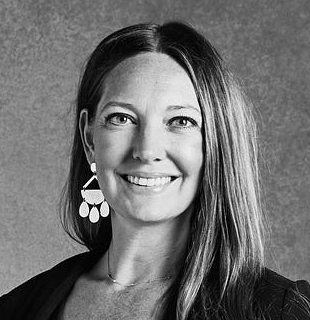Career: stability, advancement, training, development, feedback, opportunity.
The pandemic pause brought us to a moment of collective reckoning about what it means to live well and to work well. As a result, employees are sending employers an urgent signal that they are no longer willing to choose one — life or work — at the cost of the other. Working from home brought life literally into our work. And as the world now goes hybrid, employees are drawing firmer boundaries about how much of their work comes into their life. Where does this leave employers? And which perspectives and programs contribute most to progress? In our newest interview series, Working Well: How Companies Are Creating Cultures That Support & Sustain Mental, Emotional, Social, Physical & Financial Wellness, we are talking to successful executives, entrepreneurs, managers, leaders, and thought leaders across all industries to share ideas about how to shift company cultures in light of this new expectation. We’re discovering strategies and steps employers and employees can take together to live well and to work well.
As a part of this series, we had the pleasure of interviewing Candace Bridges, Chief People Officer, Four Hands.
Since 2014, Candace Bridges has been a driving force at Four Hands, the leading furnisher of home style, and now serves as the company’s first-ever Chief People Officer. Over a period of exponential growth for the company, from just over 100 employees to nearly 700, Bridges’ tenure has been marked by developing a clear and compelling employer value proposition, fostering a dynamic culture, designing infrastructure for professional growth, and promoting talent from within the company alongside making strategic external hires. Candace was awarded a Bronze Stevie Award for Chief Happiness Officer of the Year in 2022 and, under her leadership, Four Hands was recently honored as one of Austin American-Statesman’s Top Workplaces.
Thank you for making time to visit with us about the topic of our time. Our readers would like to get to know you better. Tell us about a formative experience that prompted you to change your relationship with work and how work shows up in your life.
Working in the HR industry for many years, I always felt aware of the intersection of work and personal life — but nothing could have prepared me for the immense shift in that balance after the pandemic. My first day of working from home while attempting to help my children with remote school completely changed everything for me. It marked the first time that I truly had no separation between work and home. Prior to COVID, we had a very structured schedule with defined boundaries between home and work life. I dropped my children off at school each morning, drove to an office where I worked all day, then drove home to get my children and start our evening routine. I didn’t have a laptop prior to March 13, 2020. My work and personal lives were completely separate, there were clear lines, very delineated. When our lives were shifted by the pandemic, everything about work and my personal life was metaphorically put into a blender and mixed together in a way that won’t be undone anytime soon.
Harvard Business Review predicts that wellness will become the newest metric employers will use to analyze and to assess their employees’ mental, physical and financial health. How does your organization define wellness, and how does your organization measure wellness?
At Four Hands, we take a holistic approach to wellness. We know that there are several facets to wellness in our team member’s personal lives, in their work lives, and every point in between. Our core value of “Value the Whole Person” focuses on recognizing people for everything that contributes to who they are, not just as team members, but as humans. We believe that an employee’s experience at work, whether virtual or in-person, contributes to their experience at home, and vice versa.
We know that wellness isn’t measured by one data point. We measure engagement levels through annual engagement surveys and know that attendance is another key indicator of wellness and engagement. We are also working to roll out a performance and engagement tool that will include a weekly wellness rating to be included in an employee’s 1:1 with their managers. Employees will not only be encouraged to discuss their views on the work they are doing and the progress they’re making, but they will also be encouraged to rate their personal wellbeing in order to provide a full view of where they stand.
In addition, we prioritize deepening employee relationships, whether virtual or in person. We work to set achievable goals and focus on measuring successes, not failures, while encouraging professional growth for long-term employee satisfaction. In 2021 alone, more than 20% of the workforce was promoted.
Based on your experience or research, how do you correlate and quantify the impact of a well workforce on your organization’s productivity and profitability?
A well workforce has a direct impact on productivity and profitability. When our employees show up, and show up in a real authentic and whole way, they feel more empowered to commit to their work.
A few years ago, I led the transformation of Four Hands’ HR function under a new umbrella of People & Culture. This program transcends orthodox practices, optimizing humanitarian values to drive employee performance, company success, and work/life balance. It formalized the work we had already been doing to put people first. Four Hands’ exponential growth in both people — from 100 employees when I started to nearly 700 today — is aligned with its profit growth and business success, marked by our frequent inclusion on Inc. 5000’s List of fastest growing companies.
Even though most leaders have good intentions when it comes to employee wellness, programs that require funding are beholden to business cases like any other initiative. The World Health Organization estimates for every $1 invested into treatment for common mental health disorders, there is a return of $4 in improved health and productivity. That sounds like a great ROI. And, yet many employers struggle to fund wellness programs that seem to come “at the cost of the business.” What advice do you have to offer to other organizations and leaders who feel stuck between intention and impact?
My advice to create real impact is to look at the bigger picture, not just a single moment in time.
Speaking of money matters, a recent Gallup study reveals employees of all generations rank well-being as one of their top three employer search criteria. How are you incorporating wellness programs into your talent recruitment and hiring processes?
Four Hands is working on a complete audit of our Employee Value Proposition to ensure that we support wellness in a meaningful and impactful way, for all of our employees. For potential team members, we highlight our programs on our Careers page and more fully in conversations with our candidates. In addition, we use a proven evaluation process that incorporates behavioral assessments and interview techniques that go beyond skills and experience to better understand what drives them and contributes to the full person that they will bring to Four Hands.
It is also vitally important that we engage our current team members in these wellness programs. The first step in engaging our current team is ensuring that they know what we offer and how to access it. Last year we created an internal employee-facing site to provide our team members easy access to real-time programs and resources at their fingertips. We also hosted our first ever Total Rewards Fest and invited all of our vendors to participate. The goal was to increase awareness of these programs in a fun, relaxed, and engaging way. We’re excited to launch our first internal newsletter that will continue to highlight key initiatives, programs, and news that we feel is important for our employees to hear.
We’ve all heard of the four-day work week, unlimited PTO, mental health days, and on-demand mental health services. What innovative new programs and pilots are you launching to address employee wellness? And, what are you discovering? We would benefit from an example in each of these areas.
Mental Wellness:
To support our team’s mental wellness, we expanded our Employee Assistance Program, which assists with personal and/or work-related issues that may impact their job performance, health, or mental and emotional well-being, to ALL household members. We also offer on-demand mental health training for our managers through our EAP. We have a very humble culture at Four Hands, and practice vulnerability-based trust. This approach, along with our core values, provides a safe space for our team members to go beyond the business and feel comfortable to share setback and feel supported, not judged.
Emotional Wellness:
We focus on emotional wellness by embracing our core value of “valuing the whole person” in everything we do. We create a psychologically safe place where our employees can have authentic and vulnerable conversations.
Social Wellness:
We intentionally create organic social gathering opportunities. This includes our office design, which encourages collaboration, as well as regular engagement programs, such as our department Halloween Costume Contest and Four Hands Olympics.
Physical Wellness:
To keep our employees physically active, we have an on-site gym and a ClassPass program. In 2023, we’re excited to continue to support physical wellness through other opportunities that we’ve identified, including a wellness stipend.
How are you reskilling leaders in your organization to support a “Work Well” culture?
Going into 2023 we’re excited to expand our Manager training beyond our Employee Assistance Program to incorporate all facets of wellness through onsite and on-demand training. Our goal is to make this a part of our daily work and conversations and to empower all of our team members to better understand the concept and how it relates to how they show up and interact with their team members.
Ideas take time to implement. What is one small step every individual, team, or organization can take to get started on these ideas — to get well?
Take a human-centered approach to your team members.
When we stop looking at our employees as cogs in the wheel and begin to view them as humans, we see real change in the workplace. One of my favorite quotes by Bob Chapman is one to live by, “Everyone is someone’s precious child.” I think about that quote daily.

What are your “Top 5 Trends To Track In the Future of Workplace Wellness?”
The number one trend in workplace wellness right now is not just acknowledging but embracing that our personal and professional lives have blended. We can’t fight it, but have to lean into it. We are currently evaluating our “Total Rewards” package — encompassing tangible employee benefits. We’re approaching this evaluation through the lens of 5 distinct, but overlapping buckets: compensation, benefits, career, culture, and work.
- Compensation: salary and bonuses.
- Benefits: insurance, time off, holidays, flexibility, family, retirement support, wellness.
- Career: stability, advancement, training, development, feedback, opportunity.
- Culture: core values, leadership, support, collaboration, social responsibility, communication.
- Work: recognition, autonomy, work-life balance, environment, purpose, impact.
What is your greatest source of optimism about the future of workplace wellness?
The pandemic forced us to completely reevaluate the role that a company plays in the wellness of their employees. It created a level playing field through the vulnerabilities it exposed within our people. It forced us to see each other as humans, because no one was protected from the impact of COVID on themselves, their loved ones, or their communities.
Our readers often like to continue the conversation with our featured interviewees. How can they best connect with you and stay current on what you’re discovering?
LinkedIn: https://www.linkedin.com/in/candacebridges/
Email: [email protected]
Thank you for sharing your insights and predictions. We appreciate the gift of your time and wish you continued success and wellness.


